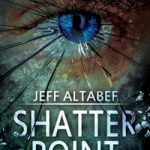Vacations? I know where I am going, where I am staying, the things I want to do on vacation and likely even the days I’ll be doing them while I travel.
Dinner? I know today what I am having tomorrow.
My day? I know what I’m doing Monday of next week.
My first novel? Zero planning.
I don’t know if I would suggest this to other writers as a method, but it worked for me. I started with nothing more than one scene.
For a few months an idea kept playing itself out in my head.
The Executor of a will comes into an attorney’s office and asks to see him. The Executor presents the attorney a will and demands to know why not only is the attorney’s name in the will, but why the will directed the attorney handle the legal work for the estate. The Executor is also curious about why the will directs that the attorney receive the contents of a safe deposit box after the work on the will was completed. To complicate matters, no one, knew of the safety deposit box’s existence or what may be inside.
That set up expanded into a scene where the attorney and the Executor have it out, so to speak. This worked well for me as an initial starting point to set some tension and immediately set the stage for some degree of conflict in the book. It’s a good thing since all I had was the initial idea. There was a great deal of editing from the first draft to publication, but there was no other advance planning done. To see what the first chapter ended up looking like check it out here.
The rest of the book was the same way. Characters appeared, sub-plots emerged, tension developed and resolution happened. About halfway through the book I decided to go back and add a prologue, but from start to finish on the book that was it.
Then when I finished I had more than a few people tell me that just wasn’t the way to do it.
Through the process I had a number of head scratching sessions where I had to really thing about how things were going to develop, but I think this provided a check for me and gave the plot a more realistic feel.
I have a friend who knows every twist and turn a book will take before he starts writing. He uses index cards and charts the progression of the book by taping the cards to the walls in a horizontal sequence around the office. If he needs to add more detail, different characters or sub-plots he expands on the vertical. Confuses me but it works for him.
I have another friend who starts with an outline and expands it and expands it and expands it until he has his book. Again, confuses me, but works for him.
For my follow up book I am doing a bit more planning. I have my opening scene, a few sub-plots from the first book I want to develop further (book two is a sequel), but beyond that the book is coming to life as I write it.
Bottom line?
Plan or no plan, roadmap or not – if it works for you then it works.
Eddie Van Halen once was asked, or so I was told, how when someone was learning a song by ear if they would know if what they were playing was correct. Eddie said, “If it sounds good it’s right.” Now Eddie Van Halen has also said, “hat if you make a mistake make it again so people think you know what you’re doing. I think if you read these two pearls of wisdom together you’ll be well on your way to some tasty morsels of prose by allowing your own style to develop and let what works for you be your guide.



